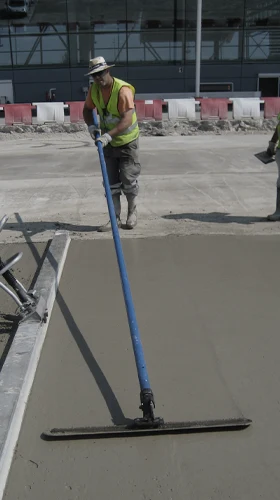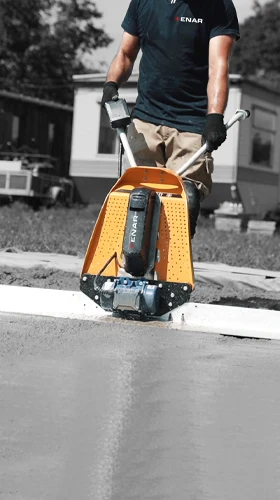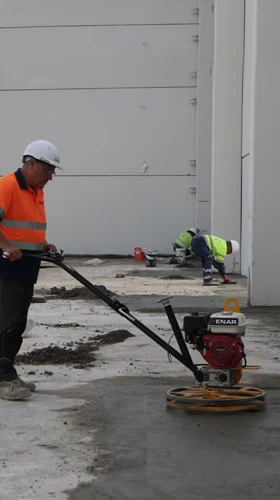How does a vibrating screed work?
After pouring the concrete into the structure, it is initially leveled before using the vibrating screed. The generated oscillations penetrate to a depth of up to 18 cm, depending on the type of concrete.
The vibrating screed is placed on top of the concrete with the engine running, and the handle is held to prevent the machine from jumping on the concrete. The screed should remain in contact with the concrete and should not exhibit any resistance; it should glide smoothly over the concrete.
Once vibrated, footprints and tool marks should not appear. Instead, a mixture called “slurr“ (a mixture of cement and fine sand particles) appears on the top layer, typically 3-4 mm thick. Water will be evacuated within a short period, and the surface will become matte. When the thin slurry layer hardens, it acts like a drying paper, preventing the “bleed“ effect.
After a few hours, the concrete is ready for finishing. This process is performed using machines called power trowels, and the necessity for this type of finish depends on the type of flooring.
- What is concrete surface vibration and why is it important?
- How does a power trowel work and when should it be used?
- What types of finishes are available for concrete flooring?
- What is the difference between polished, trowelled and semi-polished concrete?
- Petrol or electric vibrating screed?
- How do I choose the right size vibrating screed for my project?
- What maintenance does a vibrating screed or trowel require?
- How to solve the most common problems when using a trowel?





